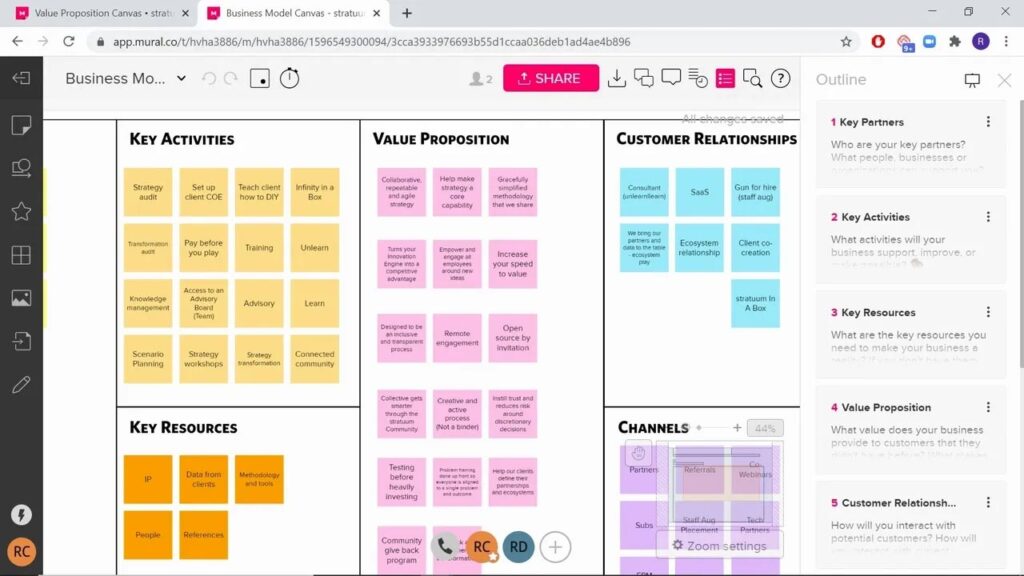For years, I have been helping organizations find their Winning Aspiration/North Star and then aligning on “Where to Play” and “How to Win”. But, up until today I think I got it wrong with the “win” part. Before I go deeper, it is worth mentioning that I think of myself as a competitive person on and off the court. I have always enjoyed the thrill of the kill in sales and have felt proud by crushing my numbers, receiving recognition and even awards. Who wouldn’t? Look at your resume, how much of it is related to winning even if it is written between the lines? It’s not my fault, honest. I grew up competing across many sports and I have been lucky enough to continue competing long into adulthood. But somewhere along the line, winning somehow implied a zero-sum or a finite game for me. This mindset drives results in professional sport but not always in business. In business, focusing on short-term winning is often at the expense of holding a long-term leadership position in the market.
“How to Win” vs “How to Lead” mindset
Part of this post was inspired by Simon Sinek’s new book, The Infinite Game . He had me at Chapter 1 with the businesses examples where companies felt they “had to win”. These examples all highlighted short term thinking at the expense of long-term success, and I’ve experienced that in my day-to-day consulting work. Today, organizations need to think longer than six months out. If your organization is solely thinking about the next 6 months, you are missing a huge opportunity to re-engineer the future. Yes, even in a pandemic. Most of us have figured out how to play the game and survive this new business environment, but few of us have figured out how the game will be played after we are gone.
Take the lead and create your future. Don’t wait for it to arrive on your doorstep, by then it will be too late. You can create your future by leveraging and combining strategy design and scenario planning. It is a creative process that balances playfulness and rigor. You start your journey by getting the right people a seat at the [virtual] table from across your organization. Cross-functional collaboration can bring the best in diverse thinking needed to create a Winning Aspiration/North Star that is intended to survive you. By designing the future with the purpose of getting it to show up slightly ahead of schedule you are now elevating your winning mindset. Congratulations, with your vision of the future in hand you are now leading.
Lose the fail-fast mindset, there is no such thing as failure
Now that you have a vision everyone aspires toward, what’s next? How do I take the first step and actually gain that leadership position? Well, your job is to now figure out how to test that future vision. Continuing your collaboration efforts, your group must figure out “what would have to be true” to deliver your future. Many companies define leap of faith assumptions (LoFAs) only to get stalled by arguing over assumptions. Skip the headache and create indisputable facts that would have to be true for your future to become a reality. Now, it is time to take a leadership stance and make a choice between your scenarios.
Strategy is all about making choices. No strategy is perfect, and no strategy is guaranteed. That’s the point. But if you are going to lead, treat each of your strategic bets as a learning experience. No idea has ever been, or can ever be, analytically proven before launch. Get comfortable being uncomfortable as you test the hypothesis that will produce a level of confidence for you to move forward. This isn’t about blindly leaping into the future, this is about testing strategically aligned new ideas and radical innovations and learning from the outcomes. It is here you will let go of your old “fail-fast” mindset. Even though you remain agile, you are testing and learning. When you are learning, there is no such thing as failure.
Good leaders take a future-back vs present-forward approach
Management and leadership teams spend most of their time thinking in a present-forward manner, you need that. You need to deal with your core operations and the working environment you are in today. However, at the same time you also need to commit and carve out 10 to 20% of your leadership time to thinking about the future. Some call this the Art of the Possible or Visioning where you are looking at trends and other factors impacting your industry. But it’s not about having certainty about the future, it’s actually a different discussion. It’s about having a different mindset as leaders and discussing the future in a way that allows you to learn. The misconception is that the future is a photograph when in fact it’s an impressionist painting.
You are never done creating your future, you need to consistently come back to it. Besides, if you stand still you stop being a leader and you will most likely get run over by your competition. So, what does your 10-20% time look like? These are structured discussions, not ad-hoc meetings. You need tools that enable strategy design and a way to look at trends, where the consumer is heading and ask what that means to your organization. These tools need to foster diverse thinking and provide for cross-collaboration. Sometimes it’s the person in the back of the room who never said much that is now contributing the most. The ability to facilitate everything remotely puts everyone on an even playing field and gets everyone in the game. And at the end of the day this is leadership at its best, and not just about winning.
